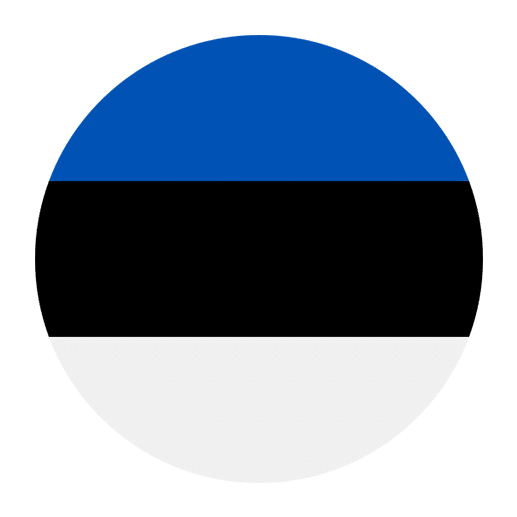Planning a trip to Estonia is an exciting prospect. This beautiful Baltic country, known for its stunning landscapes, medieval architecture, and vibrant culture, offers a plethora of experiences for travelers. However, like any trip abroad, preparing for your visit involves more than just packing your bags and booking your tickets. One crucial aspect of preparation is familiarizing yourself with the local language and customs. While many Estonians speak English, learning some basic Estonian phrases and understanding the cultural nuances can significantly enhance your travel experience. This article will provide you with practical language tips and cultural insights to help you make the most of your trip to Estonia.
Why Learn Estonian?
Estonian, or Eesti keel, is the official language of Estonia and belongs to the Finno-Ugric language family, closely related to Finnish and distantly related to Hungarian. Learning some basic Estonian can greatly enrich your travel experience in several ways:
1. **Cultural Connection**: Speaking the local language, even at a basic level, shows respect and appreciation for the culture. It can help you connect more deeply with the people and places you visit.
2. **Practical Communication**: While many Estonians, especially younger people and those in tourist areas, speak English, there may be situations where knowing some Estonian will be helpful, such as in rural areas or with older generations.
3. **Enhanced Experience**: Understanding the local language can enhance your overall travel experience, allowing you to navigate more easily, read signs and menus, and participate more fully in local activities and traditions.
Basic Estonian Phrases
Before diving into the more specific language tips, it’s helpful to start with some basic Estonian phrases. Here are some essential expressions that will be useful during your trip:
1. **Greetings and Politeness**:
– Hello: Tere
– Good morning: Tere hommikust
– Good evening: Tere õhtust
– Goodbye: Nägemist
– Please: Palun
– Thank you: Aitäh
– Yes: Jah
– No: Ei
2. **Common Questions**:
– How are you?: Kuidas läheb?
– Do you speak English?: Kas te räägite inglise keelt?
– Where is the restroom?: Kus on tualett?
– How much does this cost?: Kui palju see maksab?
3. **Numbers**:
– One: Üks
– Two: Kaks
– Three: Kolm
– Four: Neli
– Five: Viis
4. **Emergency Phrases**:
– Help!: Aidake!
– I’m lost: Ma olen eksinud
– I need a doctor: Mul on arsti vaja
Pronunciation Tips
Estonian pronunciation may seem daunting at first, but with a little practice, you can get the hang of it. Here are some tips to help you pronounce Estonian words correctly:
1. **Vowels**: Estonian has nine vowels, which can be short or long. The length of the vowel can change the meaning of a word. For example, “sada” (hundred) and “sääda” (to send) differ only in the length of the vowel.
2. **Consonants**: Consonants can also be short or long, and the length can affect the meaning. For example, “kada” (frame) and “kadda” (to disappear).
3. **Stress**: The primary stress in Estonian words usually falls on the first syllable.
Language Tips for Specific Situations
Now that you have a grasp of some basic phrases and pronunciation, let’s look at specific scenarios where knowing Estonian can be particularly useful.
Restaurants and Cafes
Dining out is an integral part of any travel experience. Here are some phrases that will help you navigate menus and communicate with waitstaff:
1. **Ordering Food**:
– I would like to order: Ma sooviksin tellida
– What do you recommend?: Mida te soovitate?
– I am vegetarian: Ma olen taimetoitlane
2. **Dietary Restrictions**:
– I am allergic to nuts: Mul on pähkliallergia
– Does this contain dairy?: Kas see sisaldab piimatooteid?
3. **Paying the Bill**:
– Can I have the bill, please?: Kas ma saaksin arve, palun?
– Do you accept credit cards?: Kas te võtate vastu krediitkaarte?
Shopping and Markets
Whether you’re shopping for souvenirs or groceries, these phrases will come in handy:
1. **Inquiring About Products**:
– How much does this cost?: Kui palju see maksab?
– Do you have this in a different size?: Kas teil on seda teises suuruses?
2. **Bargaining and Payments**:
– Can you give me a discount?: Kas te saate mulle allahindlust teha?
– I would like to pay in cash: Ma sooviksin maksta sularahas
Transportation
Navigating public transportation and taxis will be easier with these phrases:
1. **Asking for Directions**:
– Where is the bus station?: Kus on bussijaam?
– How do I get to the train station?: Kuidas ma saan rongijaama?
2. **In a Taxi**:
– Take me to this address, please: Viige mind palun sellele aadressile
– How much will it cost to get to the airport?: Kui palju maksab lennujaama sõitmine?
Understanding Cultural Nuances
Language learning goes hand in hand with understanding cultural nuances. Estonia has a rich cultural heritage, and being aware of certain customs and etiquette will make your interactions smoother and more enjoyable.
Social Etiquette
1. **Greetings**: A firm handshake and direct eye contact are standard when meeting someone for the first time. Among friends, a simple “Tere” (Hello) is sufficient.
2. **Politeness**: Estonians value politeness and respect. Always say “Palun” (Please) and “Aitäh” (Thank you) in interactions.
3. **Personal Space**: Estonians typically value personal space and may not be as physically expressive as people from some other cultures. Respecting personal space is appreciated.
Dining Etiquette
1. **Table Manners**: Wait for the host to invite you to sit and start eating. It’s polite to try everything that is offered to you.
2. **Toasts**: If someone makes a toast, it’s customary to raise your glass and take a sip. You can say “Terviseks” (Cheers) when clinking glasses.
Festivals and Traditions
1. **Jaanipäev (Midsummer Day)**: Celebrated on June 24th, this is one of the most important holidays in Estonia. It involves bonfires, singing, and dancing.
2. **Vabariigi aastapäev (Independence Day)**: Celebrated on February 24th, this day marks Estonia’s declaration of independence in 1918. It includes a military parade and various cultural events.
Resources for Learning Estonian
To further enhance your language skills before your trip, consider using the following resources:
1. **Online Courses and Apps**: Websites like Duolingo, Memrise, and Babbel offer Estonian language courses that you can access from your smartphone or computer.
2. **Language Exchange**: Platforms like Tandem and HelloTalk allow you to connect with native Estonian speakers for language exchange.
3. **Books and Audio**: Invest in a good phrasebook or an audio course like “Teach Yourself Estonian” to practice listening and speaking.
4. **YouTube Channels**: Channels like “Learn Estonian with Eesti Keele” offer free video lessons on various aspects of the Estonian language.
Conclusion
Preparing for a trip to Estonia involves more than just logistical arrangements. By learning some basic Estonian phrases and understanding the cultural nuances, you can significantly enhance your travel experience. Whether you’re dining out, shopping, or navigating public transportation, having some knowledge of the local language will make your interactions smoother and more enjoyable. Moreover, understanding social and dining etiquette will help you connect more deeply with the people and culture of Estonia.
So, start practicing your Estonian today, and get ready for an unforgettable adventure in this beautiful Baltic country!

